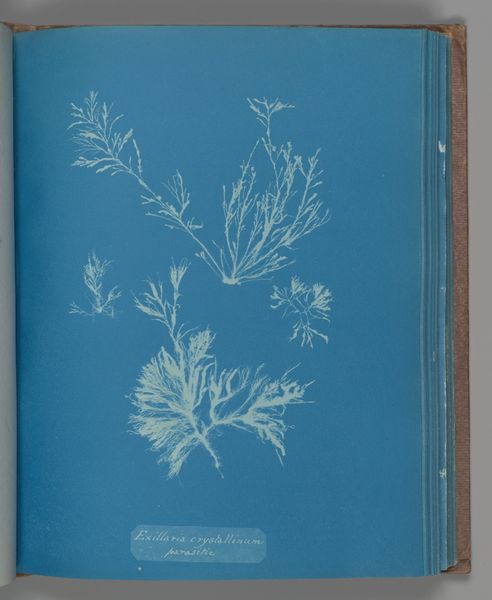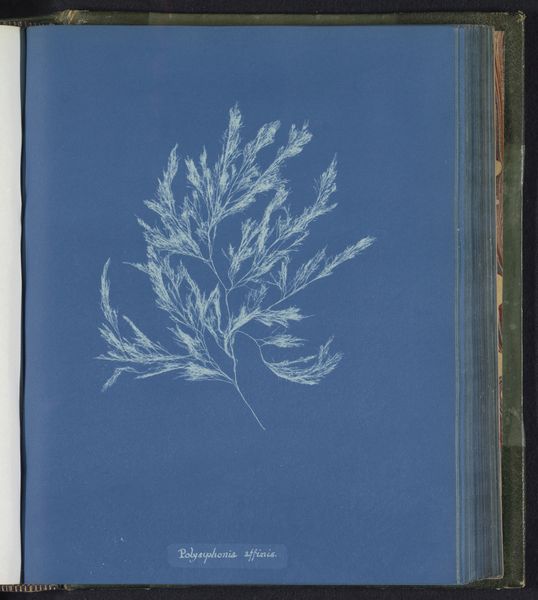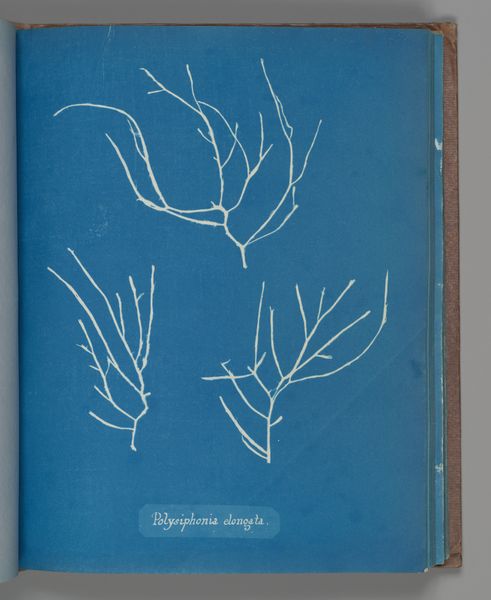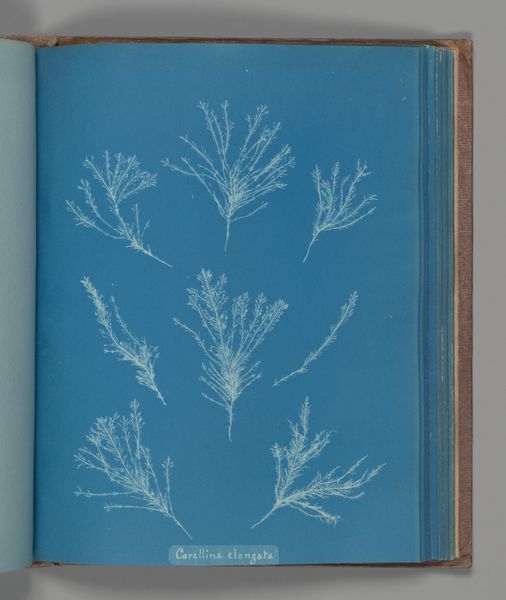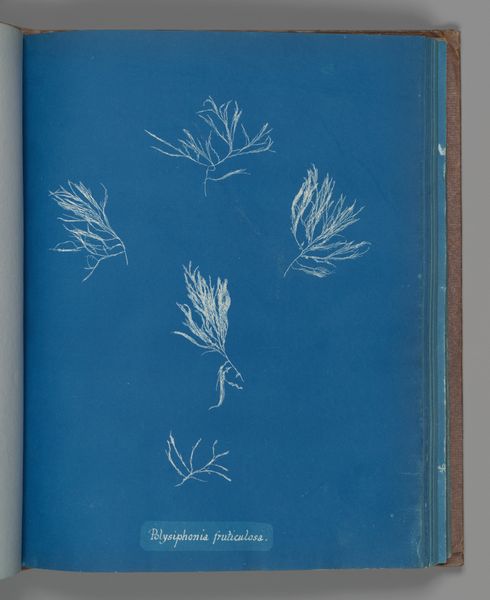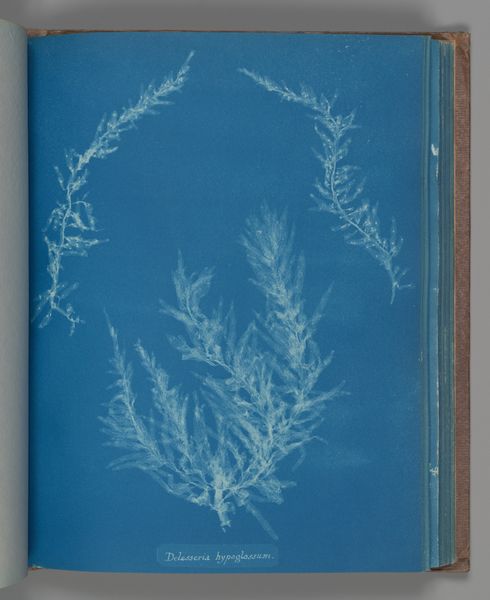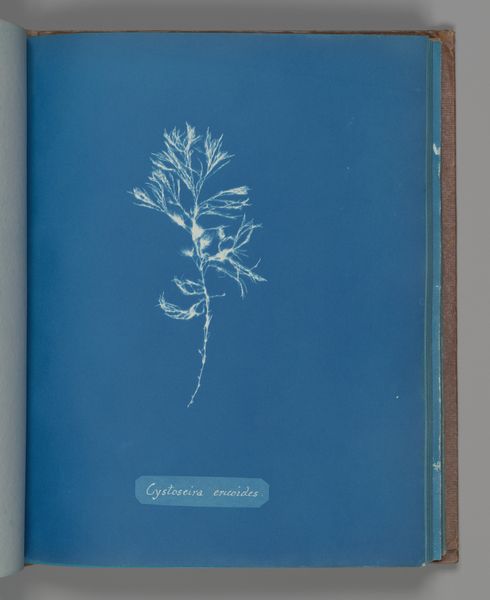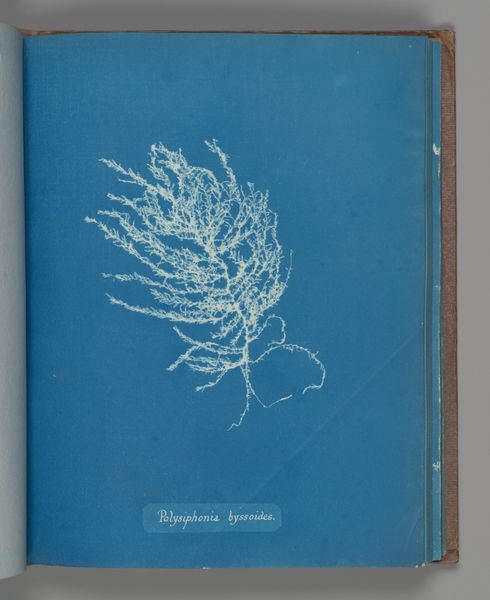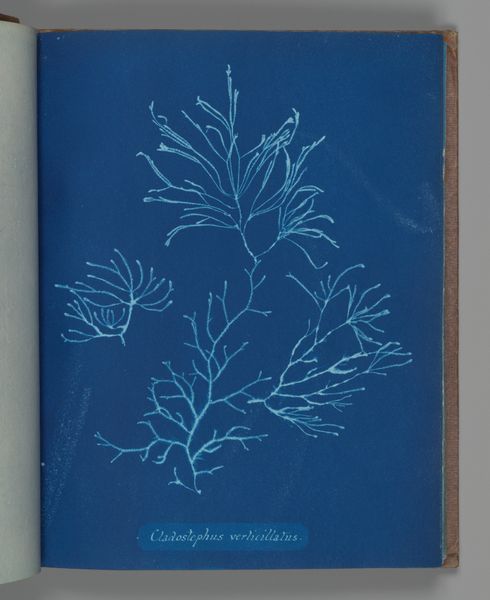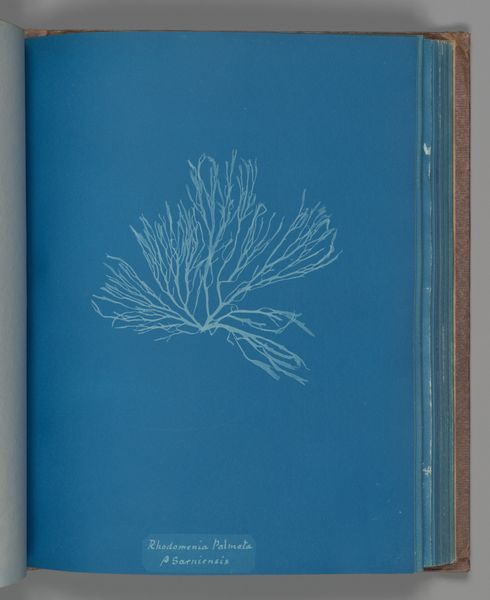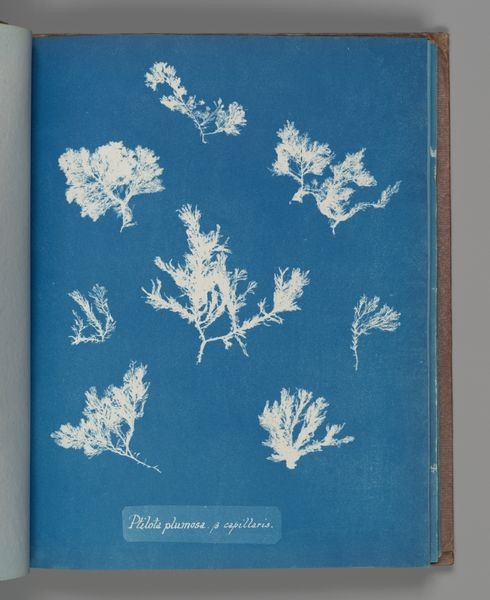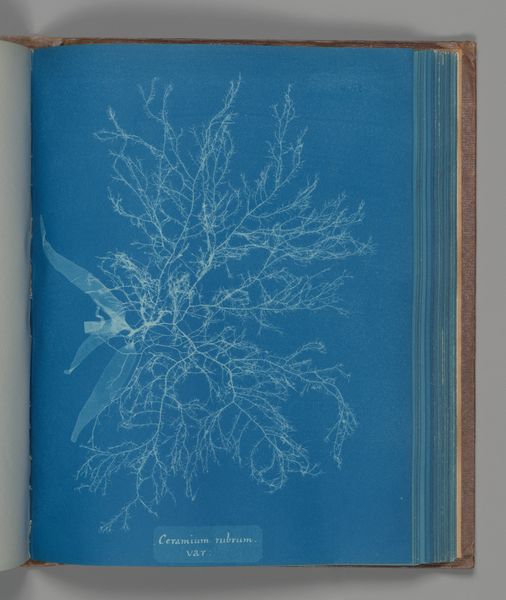
print, paper, cyanotype, photography
#
still-life-photography
# print
#
paper
#
cyanotype
#
photography
Dimensions: Image: 25.3 x 20 cm (9 15/16 x 7 7/8 in.)
Copyright: Public Domain
Editor: Here we have Anna Atkins's "Polysiphonia fibrata," made between 1851 and 1855. It's a cyanotype, a type of early photography, on paper, and it depicts seaweed. The stark white against the deep blue is quite striking, almost ethereal. What stands out to you in this image? Curator: The cyanotype process is crucial here. Atkins wasn't just documenting seaweed; she was engaging with a specific technology and the very material of photography. Consider the labour involved: preparing the chemicals, carefully laying out the seaweed, exposing it to light, and then fixing the image. How does the 'blueprint' aesthetic influence your perception of this work? Editor: It does feel very scientific, almost like a technical drawing. Curator: Exactly. And that’s key. Atkins straddled the line between art and science. The cyanotype, often used for technical reproductions, elevated her subject. She utilized accessible, reproductive means to create a unique work. The plant specimen becomes both object and image, questioning our ideas of the art object's status. This piece resides now at the Metropolitan Museum of Art. Does that strike you as odd, given its means of production? Editor: That's fascinating to think about. I hadn’t considered how the choice of materials and process challenges traditional definitions of art. I always thought she was just capturing likenesses for science! Curator: It’s a constant push and pull, isn't it? And it is this act of documentation by reproductive means, I’d argue, that holds great artistic interest. It forces us to consider value. Editor: Absolutely. I see it differently now. Thanks to that process explanation, I see not just a photo but how much handiwork went into the piece and why it is still relevant today. Curator: I'm glad! By recognizing the material process, we enrich our understanding and value what these things meant back then.
Comments
No comments
Be the first to comment and join the conversation on the ultimate creative platform.
